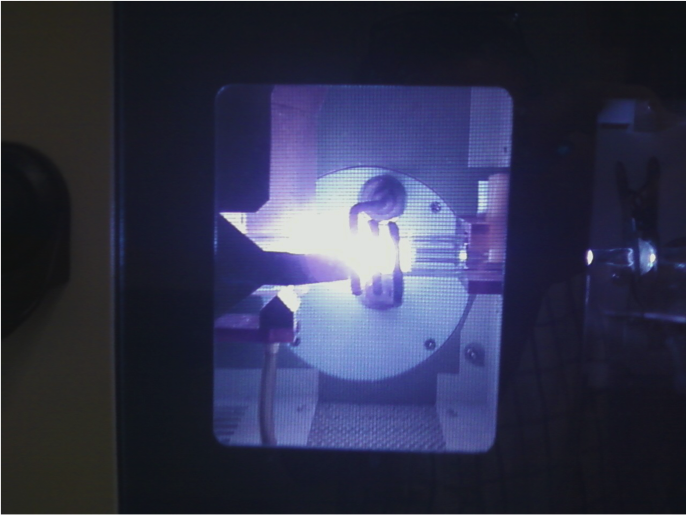Michael Armstrong (14-ERD-077)
Abstract
The field of high-temperature chemistry in partially ionized plasmas underpins the application of plasma-enhanced chemical vapor deposition in the semiconductor industry, and is of great importance for both magnetic fusion and inertial fusion energy. The focus of this project is to experimentally determine chemical concentrations and kinetics, in both the gas phase and at surfaces, of carbon and lead compounds in a high-temperature noble gas plasma. We are also investigating the reaction path of hydrogen (as a proxy for deuterium and tritium) for recovery and to avoid deposition on the first wall in a fusion energy chamber—the response of the chamber wall to plasma-environment chemistry is substantially unknown. We are utilizing a plasma-torch-based flow vessel with optical diagnostics to characterize temperature and species concentrations under conditions similar to those found in laser fusion energy chambers. These data are being synthesized into a comprehensive model that can represent the gas phase and surface chemistry across the whole range of fusion energy operating conditions. In addition, the development of detailed kinetic models and quantitative experimental data will have direct relevance to plasma-environment chemistry and plasma-enhanced chemical vapor deposition. We expect to experimentally determine chemical concentrations and kinetics, in both the gas phase and at surfaces, of carbon and lead compounds in high-temperature noble gas plasma. To provide a set of self-consistent conditions constrained by a system model, we are employing the characteristic parameters for an inertial fusion system to define the nominal phase area of interest for our investigation. However, the methods, models, and data resulting from this project will be relevant to the broader fusion community and to the wider subjects of surface deposition and material synthesis (particularly carbon chemistry) via plasma-enhanced chemical vapor deposition.
Mission Relevance
The success of this effort will help establish technical foundations to support the LLNL strategic focus area in inertial fusion science and technology and core competency in nuclear, chemical, and isotopic science and technology, and will support a potential future role in the increasingly important plasma-based processing industry.
FY15 Accomplishments and Results
In FY15 we (1) used simulations to finalize design and construction of the flow reactor, (2) installed an inductively coupled plasma generator and associated optical diagnostic platform, (3) demonstrated detection of atomic hydrogen using two-photon fluorescence, (4) demonstrated the detection of acetylene (which forms the basis for the formation of larger polyaromatic hydrocarbons) using infrared absorption spectroscopy, (5) demonstrated temperature estimates using blackbody emission and absorption spectroscopy, (6) investigated the mechanical properties of xenon to determine its suitability as a self-supporting hohlraum target-capsule material, and (7) purchased a residual gas analyzer (for mass spectroscopy) and vacuum pumps.






